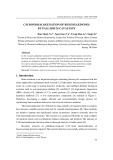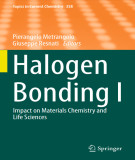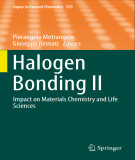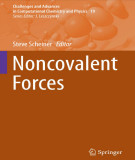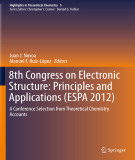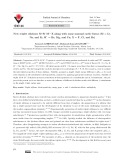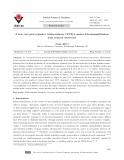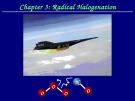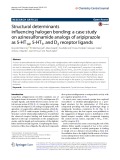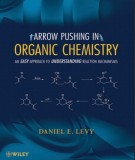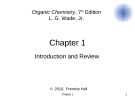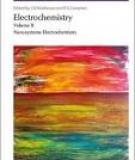
Halogen bond
-
In this research, palladium-catalyzed C-H bond halogenation of benzoxazinone derivatives has been achieved. This approach shows high regioselectivity and wide substrate scope, the products are obtained in moderate to good yields.
 10p
10p  viohoyo
viohoyo
 25-04-2024
25-04-2024
 2
2
 2
2
 Download
Download
-
Ebook "Halogen bonding I: Impact on materials chemistry and life sciences" opens with a historical perspective and a basic understanding of the halogen bond and closes showing the impact that this interaction is having in various fields such as crystal engineering, supramolecular synthesis, and medicinal chemistry.
 286p
286p  tudohanhtau1006
tudohanhtau1006
 29-03-2024
29-03-2024
 4
4
 1
1
 Download
Download
-
Ebook "Halogen bonding II: Impact on materials chemistry and life sciences" presents critical reviews of the present and future trends in modern chemical research. The scope of coverage is all areas of chemical science including the interfaces with related disciplines such as biology, medicine and materials science.
 215p
215p  tudohanhtau1006
tudohanhtau1006
 29-03-2024
29-03-2024
 1
1
 1
1
 Download
Download
-
Ebook Noncovalent forces (Challenges and advances in computational chemistry and physics, Volume 19)
Ebook "Noncovalent forces (Challenges and advances in computational chemistry and physics, Volume 19)" describes the current state of the art in terms of what we now know, and the current questions requiring answers in the future. Topics range from very strong (ionic) to very weak (CH--π) interactions. In the intermediate regime, forces to be considered are H-bonds, particularly CH--O and OH--metal, halogen, chalcogen, pnicogen and tetrel bonds, aromatic stacking, dihydrogen bonds, and those involving radicals.
 528p
528p  tudohanhtau1006
tudohanhtau1006
 29-03-2024
29-03-2024
 7
7
 1
1
 Download
Download
-
Ebook "8th Congress on Electronic structure: Principles and applications (ESPA 2012) - A conference selection from theoretical chemistry accounts" collects research findings presented at the 8th Edition of the Electronic Structure: Principles and Applications (ESPA-2012) International Conference, held in Barcelona, Spain on June 26-29, 2012. The contributions cover research work on methods and fundamentals of theoretical chemistry, chemical reactivity, bimolecular modeling, and materials science.
 228p
228p  nhanphanguyet
nhanphanguyet
 28-01-2024
28-01-2024
 6
6
 2
2
 Download
Download
-
(BQ) Ebook part 1 presents the following content: Chapter 1: Self-Assembling Cyclic Peptide-Based Nanomaterials; Chapter 2: Designer Nanomaterials for the Production of Energy and High Value-Added Chemicals; Chapter 3: Supramolecular Receptors for Fullerenes; Chapter 4: Click Chemistry: A Quote for Function; Chapter 5: Supramolecular Interactions and Smart Materials: C–X…X′–M Halogen Bonds and Gas Sorption in Molecular Solids; Chapter 6: Application of Advanced Solid-State NMR Techniques to the Characterization of Nanomaterials: A Focus on Interfaces and Structure; Chapter 7: New Tools for ...
 248p
248p  runordie7
runordie7
 30-08-2022
30-08-2022
 9
9
 2
2
 Download
Download
-
Synthesis of the ionic liquid 1-allyl-3-(4-methyl-7,8-dihydroxy-2H-chromen-2-one) benzimidazolium chloride followed by the conversion of ammonium salts on the imidazole ring hooked to the coumarin group was modified by postmodification of the silica matrix where 3-chloropropyltrimethoxysilane was used as not only a surface modification agent, but also as an ATRP halogen source. The synergetic effect of charged ammonium groups as well as hydroxyl groups present on the coumarin was investigated in terms of ATRP polymerization.
 9p
9p  langthannam
langthannam
 29-12-2021
29-12-2021
 6
6
 0
0
 Download
Download
-
Comparison of 54 M–Si–M′–X species is carried out using quantum mechanical ab initio and DFT computations at B3LYP/6-311++G**, QCISD(T)/6-311++G**, and CCSD(T)/6-311++G** levels of theory (M = Li, Na, K; M′ = Be, Mg, Ca, and X = F, Cl, Br). All triplet species with M = K appear more linear than their corresponding ones with Li and Na. The electronegativity reactivity descriptor for each halogen (X = F, Cl, Br) is used as a tool to evaluate the interrelated properties of these silylenes.
 75p
75p  tudichquannguyet
tudichquannguyet
 29-11-2021
29-11-2021
 7
7
 0
0
 Download
Download
-
A new cocrystal explosive trinitrotoluene (TNT): 1-amino-4-bromonaphthalene with reduced sensitivity
A 1:1 cocrystal of TNT and 1-amino-4-bromonaphthalene was prepared via solvent evaporation. The structure of the cocrystal was determined via single-crystal and powder X-ray diffraction. Crystal structure determination studies indicated that the main mechanism of cocrystallization originates from the intermolecular hydrogen bonding (amino– nitro), halogen bonding, and π − π stacking. Investigation of intermolecular interactions by Hirshfeld surface and fingerprint plot analysis revealed that the structures were stabilized by H…H, O…H, C…C (π−π) and Br…O interactions.
 13p
13p  tudichquannguyet
tudichquannguyet
 29-11-2021
29-11-2021
 7
7
 1
1
 Download
Download
-
The intermolecular interactions between halocyclopropenone derivatives (HC3OX; X = I, Br, Cl, and F) and hypohalous acids (HOY; Y = I, Br, Cl, and F) were studied via the MP2 method utilizing the aug-cc-pVTZ and aug-cc-pVTZ(-PP) basis sets. The three types of complexes were hydrogen bonds, halogen bonds, and complexes containing both hydrogen and halogen bonds. The results obtained indicated that interactions in the Type 1 complexes were stronger than those in Types 2 and 3. The H–O bonds revealed red shifts with complex formation in Types 1 and 2.
 14p
14p  tudichquannguyet
tudichquannguyet
 29-11-2021
29-11-2021
 12
12
 1
1
 Download
Download
-
Chapter 3 provides knowledge of radical halogenation. The main contents of this chapter include all of the following: Radical halogenation and bond strength, bond dissociation energy tables, C-H bond strengths, structure of alkyl radicals, hyperconjugation, more neighboring bonds: more hyperconjugation, radical halogenation: methane and chlorine,...
 23p
23p  larachdumlanat122
larachdumlanat122
 26-11-2020
26-11-2020
 22
22
 1
1
 Download
Download
-
A series of azinesulfonamide derivatives of long-chain arylpiperazines with variable-length alkylene spacers between sulfonamide and 4-arylpiperazine moiety is designed, synthesized, and biologically evaluated.
 12p
12p  vijiraiya2711
vijiraiya2711
 27-05-2020
27-05-2020
 14
14
 1
1
 Download
Download
-
(bq) part 2 book "arrow pushing in organic chemistry" has contents: elimination reactions, addition reactions (addition of halogens to double bonds, additions to carbonyls, summary), moving forward (functional group manipulations, name reactions, reagents, final comments)
 201p
201p  bautroibinhyen20
bautroibinhyen20
 06-03-2017
06-03-2017
 38
38
 7
7
 Download
Download
-
Chapter 1 introduction and review the organic chemistry. The goal is for you to learn: Review concepts from general chemistry that are essen-tial for success in organic chemistry, such as the electronic structure of the atom, Lewis structures and the octet rule, types of bonding, electronegativity, and formal charges; predict patterns of covalent and ionic bonding involving C, H, O, N, and the halogens. Identify resonancestabilized structures and compare the relative importance of their resonance forms.
 43p
43p  tangtuy02
tangtuy02
 11-03-2016
11-03-2016
 73
73
 6
6
 Download
Download
-
Among halogens, fluorine is quite characteristic and specific since it has the largest electronegativity (4.0 vs 3.5 for oxygen) and the sterically second smallest van der Waals' radius (1.35 ~ vs. 1.20/~ for hydrogen). A carbon-fluorine bond is also stronger than a carbon-hydrogen bond (485 kJ/mol vs 414 kJ/mol). Therefore, fluoro organic compounds have unique chemical and physical properties.
 243p
243p  maket1311
maket1311
 16-10-2012
16-10-2012
 50
50
 5
5
 Download
Download
CHỦ ĐỀ BẠN MUỐN TÌM








